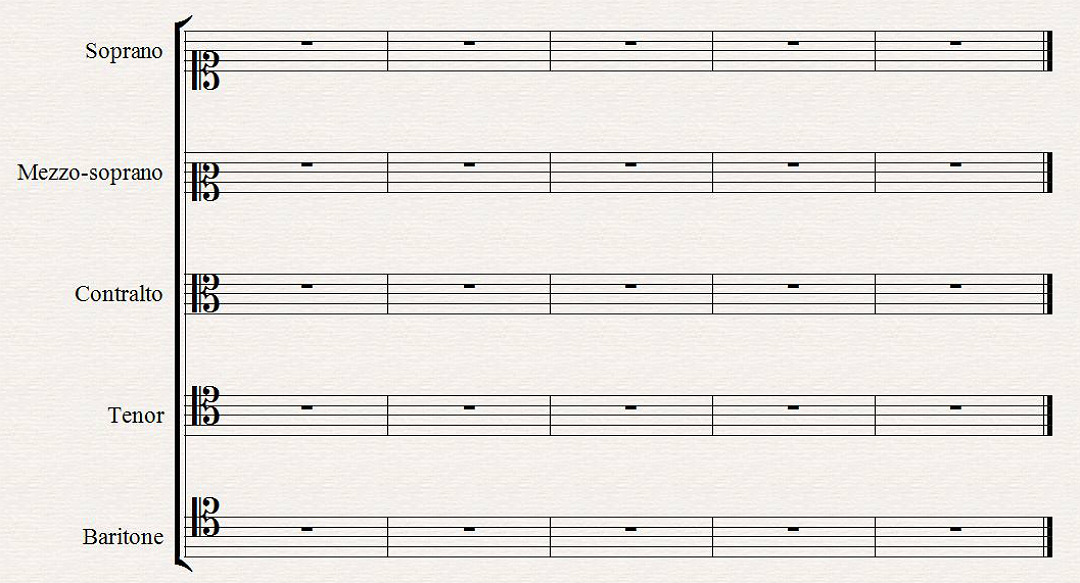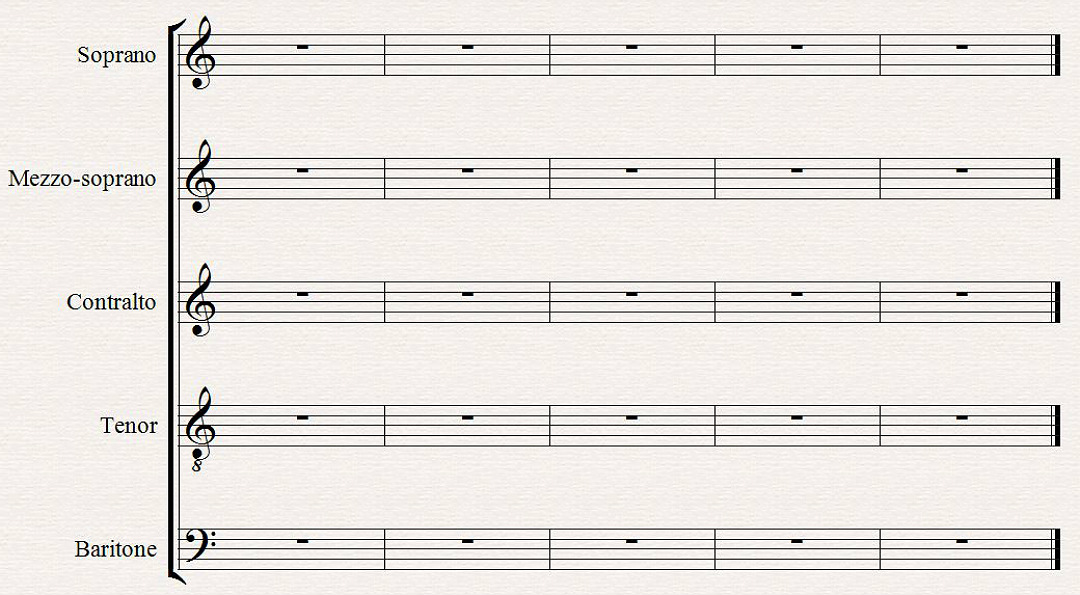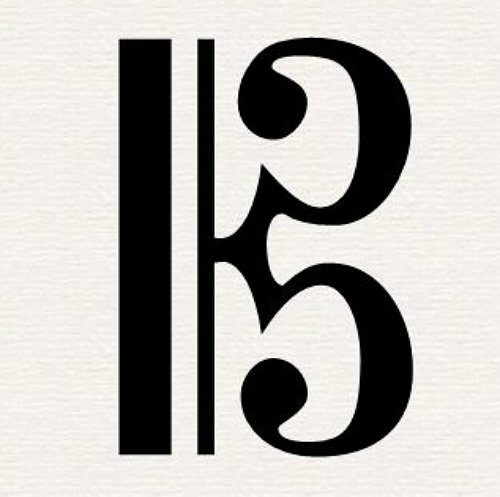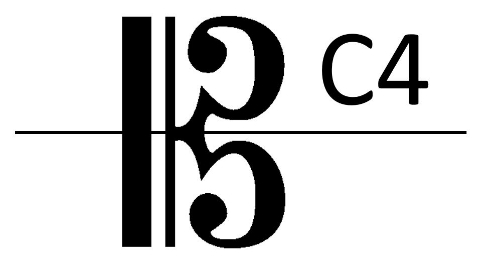Introduction to the C Clef
The C clef is an important clef in orchestral music. It’s used for certain instruments including the viola, cello, bassoon, and more. It was also commonly used in older vocal scores.
It isn’t any harder than learning F or G clef; the process of learning to read a new clef is always exactly the same. While C clef is not as common as the F and G clefs that we have covered in the previous lessons, it’s still very useful in many areas of music. It is definitely something worthwhile if you’re interested in taking your music to the next level.
Design
The design of a C clef is a thick vertical bar, followed by a thin bar just to the right. Finally, a sort of elaborate, curly design is added to the right of that:
The focus of the design is the center of the clef symbol . Whichever line cuts through the center of the clef symbol is the note middle C (C4). That’s why it’s called the C clef:
Compared to the other clefs, you may find C clef slightly more challenging to learn to draw, especially the curly part of the design. The best way to learn is to simply try copying it as best you can, several times, until you get the hang of it. Keep in mind that handwritten symbols don’t have to be perfect. As long as it’s easy to identify as a C clef, it’s probably good enough.
Positions
In older music, up to 5 different positions of the C clef were used.
The main purpose of these clefs was for vocal music. Each new position fit the range of a certain type of voice. This is also reflected by the names of the clefs, with each position corresponding to a specific voice type.
Three of these 5 positions are no longer in common use. Instead, all vocal music is usually written on either treble or bass clef. Compared with using C clefs, this results in more ledger lines, but at least we have fewer clefs to learn!
Let’s take a look at the 5 possible positions of the C clef:
Soprano Clef
The soprano clef is a specific position of the C clef that features C4 on the lowest line of the staff:

In older music, it was used to write vocal parts for soprano, which is a high women’s or child’s voice (soprano is the highest voice type). The vocal range of a soprano voice is usually from around C4 up to G5, or higher.
The placement of the clef makes the area of the staff coincide almost perfectly with the range of the soprano. Practically every note written for a soprano will stay inside the staff, without having to resort to ledger lines. This was the advantage that the soprano clef provided.
Soprano clef was sometimes used for keyboard music as well.
Mezzo-soprano Clef
Next comes mezzo-soprano, which is a medium female voice type. The normal range of a mezzo-soprano is from around A3 up to A5.
The mezzo-soprano clef places the center of the design on the 2nd lowest line of the staff (one line above soprano clef):

This places A3 on the lowest staff line, which again avoiding ledger lines as much as possible by adjusting the main staff area to the mezzo-soprano range.
Just like soprano clef, mezzo-soprano clef is no longer in use, but it still exists in older vocal scores.
Alto Clef
Alto clef is one of the two C clefs that’s still in use nowadays. We’ll learn about it in much more detail in the next lesson.
The alto clef features middle C on the center line of the staff:

Just like the other positions, in the past it was used in vocal music, often for female vocal parts that were sung by contraltos (lowest female voice type) or else mezzo-sopranos. It’s also very well placed for any instruments that have a medium range.
Nowadays it’s best known for its use in writing for viola. In fact, some even refer to it as “viola clef”.
Tenor Clef
Tenor clef is the other C clef still in use in contemporary music, and we will discuss it in a lot more detail in a later lesson.
Featuring a C clef on the 2nd highest line, it was used in vocal music for a tenor, which is a medium-high male voice type:

Baritone Clef
The fifth and final position is the baritone clef, which is centered on the top line of the staff:

The baritone clef was sometimes used for baritone vocal parts. Baritone is a male voice type somewhere between tenor and bass.
However, you may have noticed something interesting – baritone clef is actually identical to another clef that we learned about before, the F baritone clef. Both clefs have C4 on the top line of the staff, and F3 on the middle line; in fact, all the notes are exactly the same:

For this reason, this particular C clef was not actually used very often, since there was already another clef that provided the exact same function.
Practical Use
Even though 3 out of 5 of these clefs are obsolete (soprano, mezzo-soprano, and baritone), there are situations in which we might still use them. For example, if we wanted to read an old vocal score, or recreate a score in the style of older music:

Here’s how that same setup would look in a modern vocal score (notice which clefs are used for each voice type):

The main uses of the C clef nowadays are the positions of the alto and tenor clefs, and we will look at both of them in much greater detail in the next two lessons.
Practice Quiz
C Clef Quiz
Test your knowledge of this lesson with the following quiz:
Image Attribution:
practice makes perfect. by Jukie Bot ©2013 CC by 2.0

